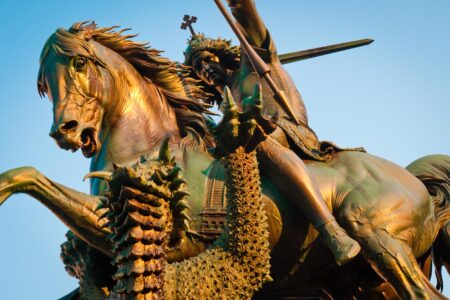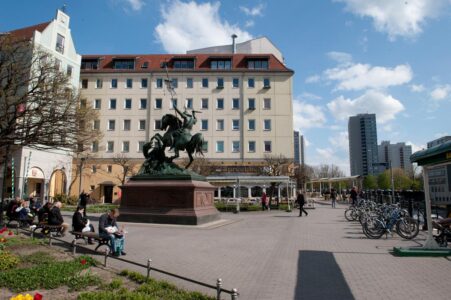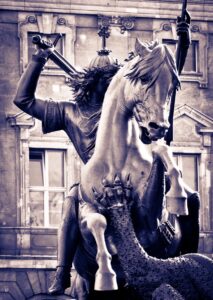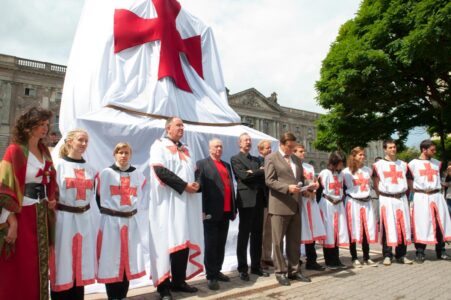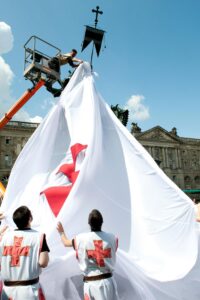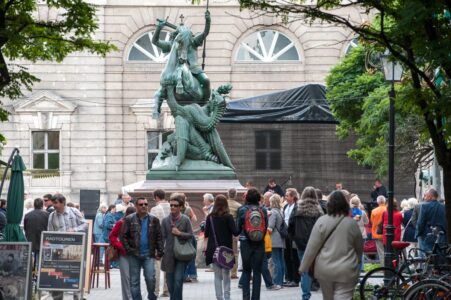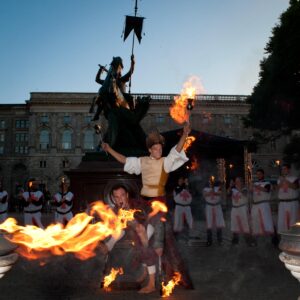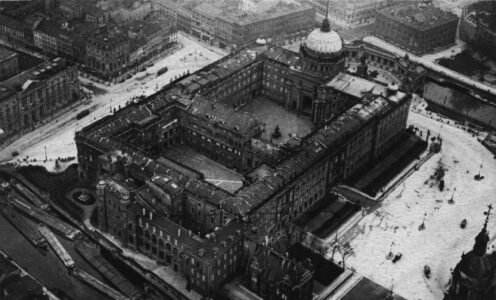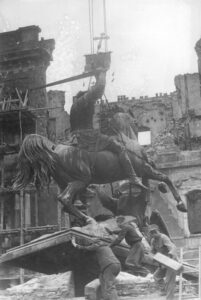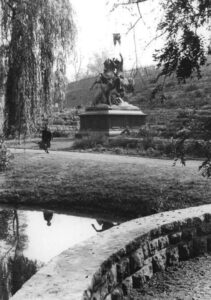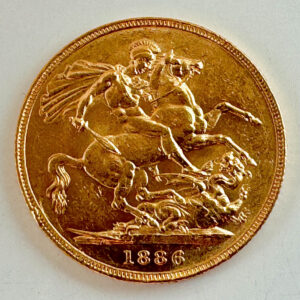Staint George – a well-traveled attraction
St. George is an impressive bronze sculpture, approximately 5.5 meters high, which was created between 1853 and 1855 by the Prussian sculptor August Kiss. It is extremely detailed and shows the legendary Christian saint with sword and cross staff on horseback, fighting a dragon. George, who according to legend freed the country from a tyrannical dragon and was therefore revered first and foremost for his bravery in the fight against evil, is the patron saint of many noble families, cities and knightly orders. However, this is not only the case in Germany, but also particularly in England, where the George Cross, the red cross on a white background, forms the flag of England. Saint George was also the patron saint of Richard the Lionheart and his depiction as a dragon slayer on horseback has been a motif on the reverse of some British coinage from 1817 to the present day. That version was designed by Benedetto Pistrucci, an Italian master engraver in the service of the Royal Mint.
But let’s get back to the Prussian August Kiss. He had his recently completed work transported by rail to the Paris World Exhibition, where it was awarded second place. After Kiss’ death in 1865, the statue was bequeathed to the city of Berlin, which gifted it to the then King Wilhelm I, who had it placed in the large courtyard of the Berlin Palace. After the palace was largely burnt down towards the end of the Second World War and was to be demolished in the GDR in 1950, St. George was moved to the Great Pond in Volkspark Friedrichshain and only returned to Berlin Mitte in 1987. It now stands opposite Museum Island, just a few minutes’ walk from its original location, in a prominent position in the Nikolai Quarter.
However, we had to do without the sculpture for about a year. It was extensively restored in 2010 and 2011 and returned to its red granite plinth on the banks of the Spree in June 2011. Reason enough for a rededication, which we celebrated with a spectacular Georgsfest on June 24, 2011.



